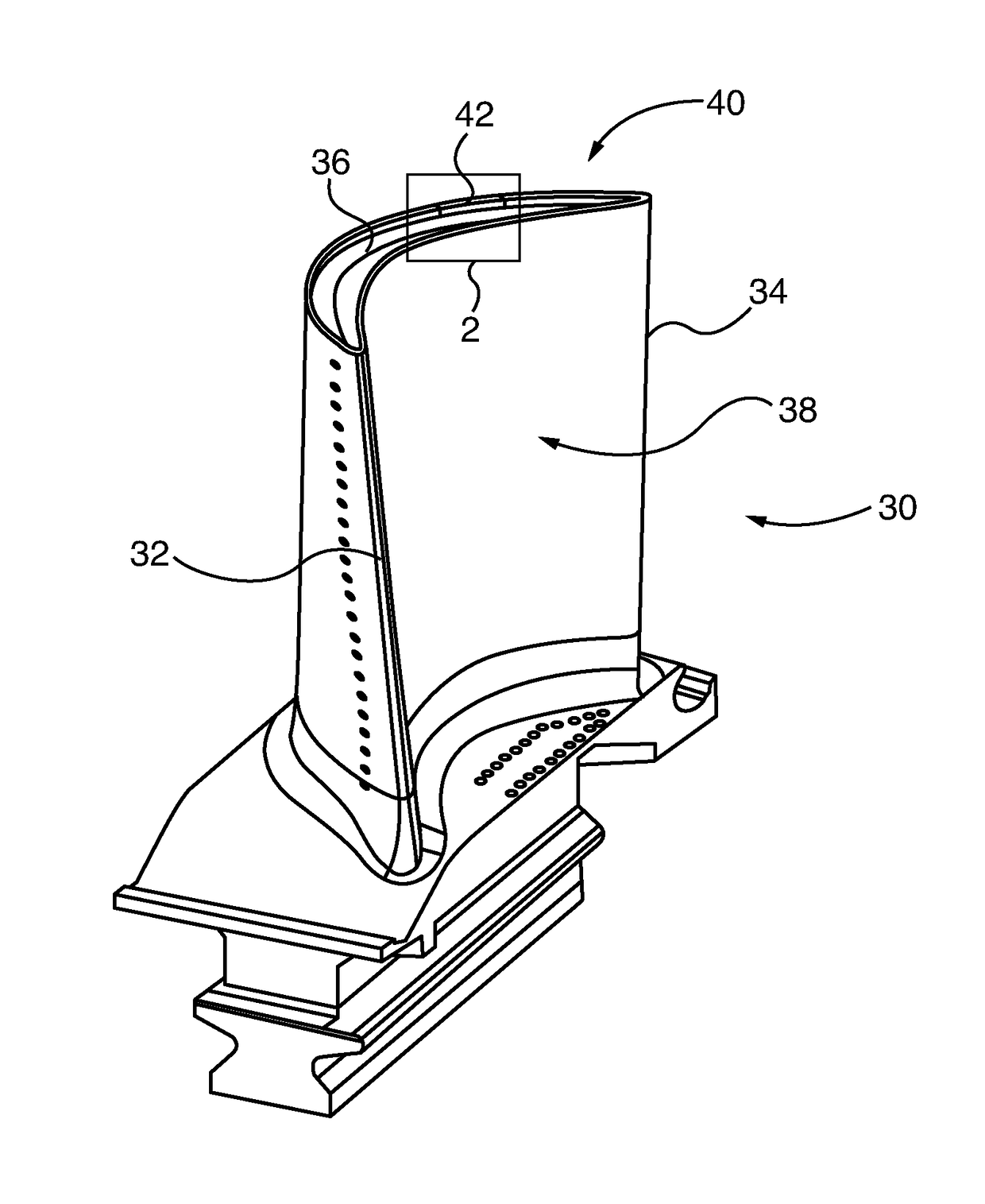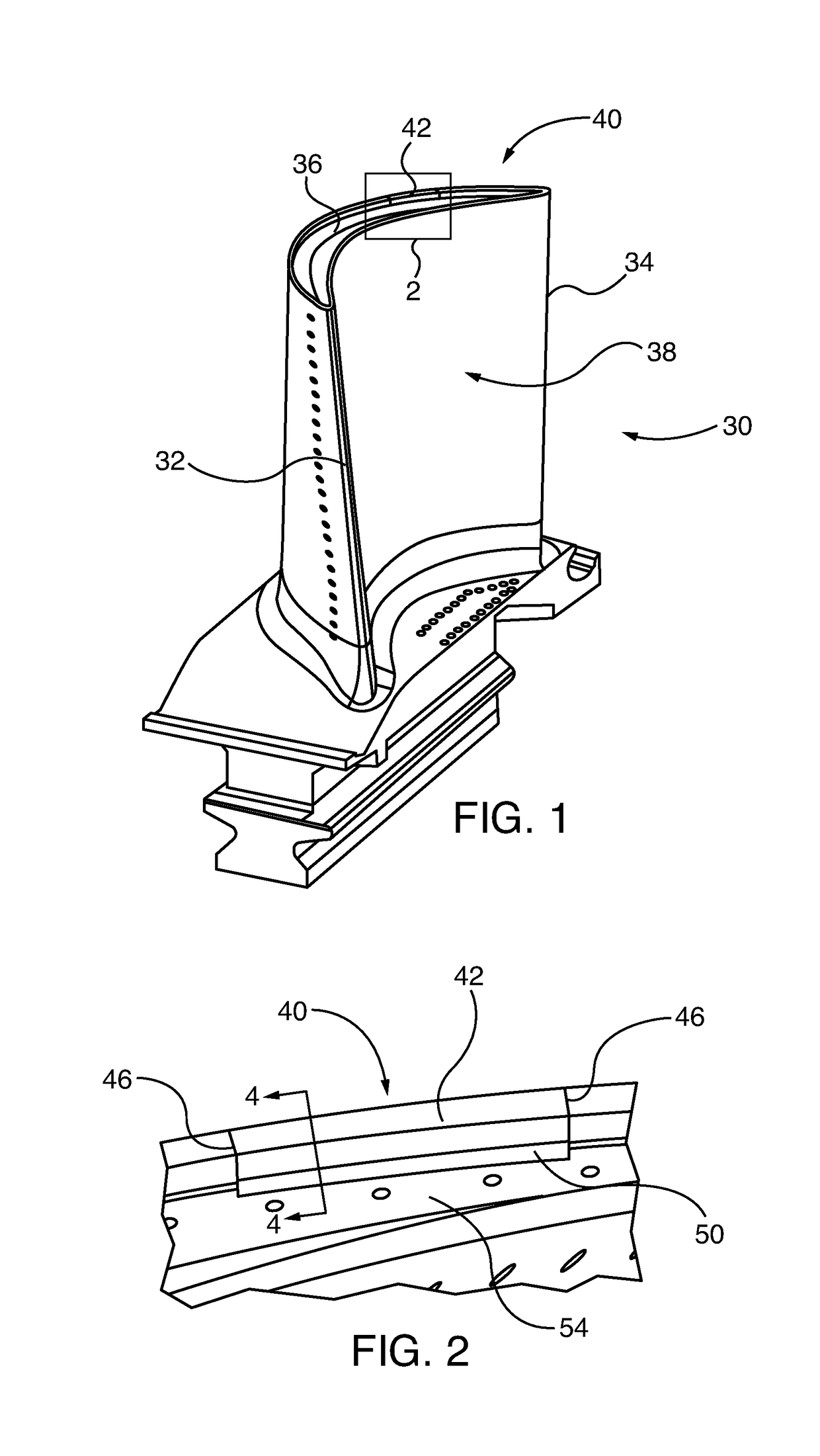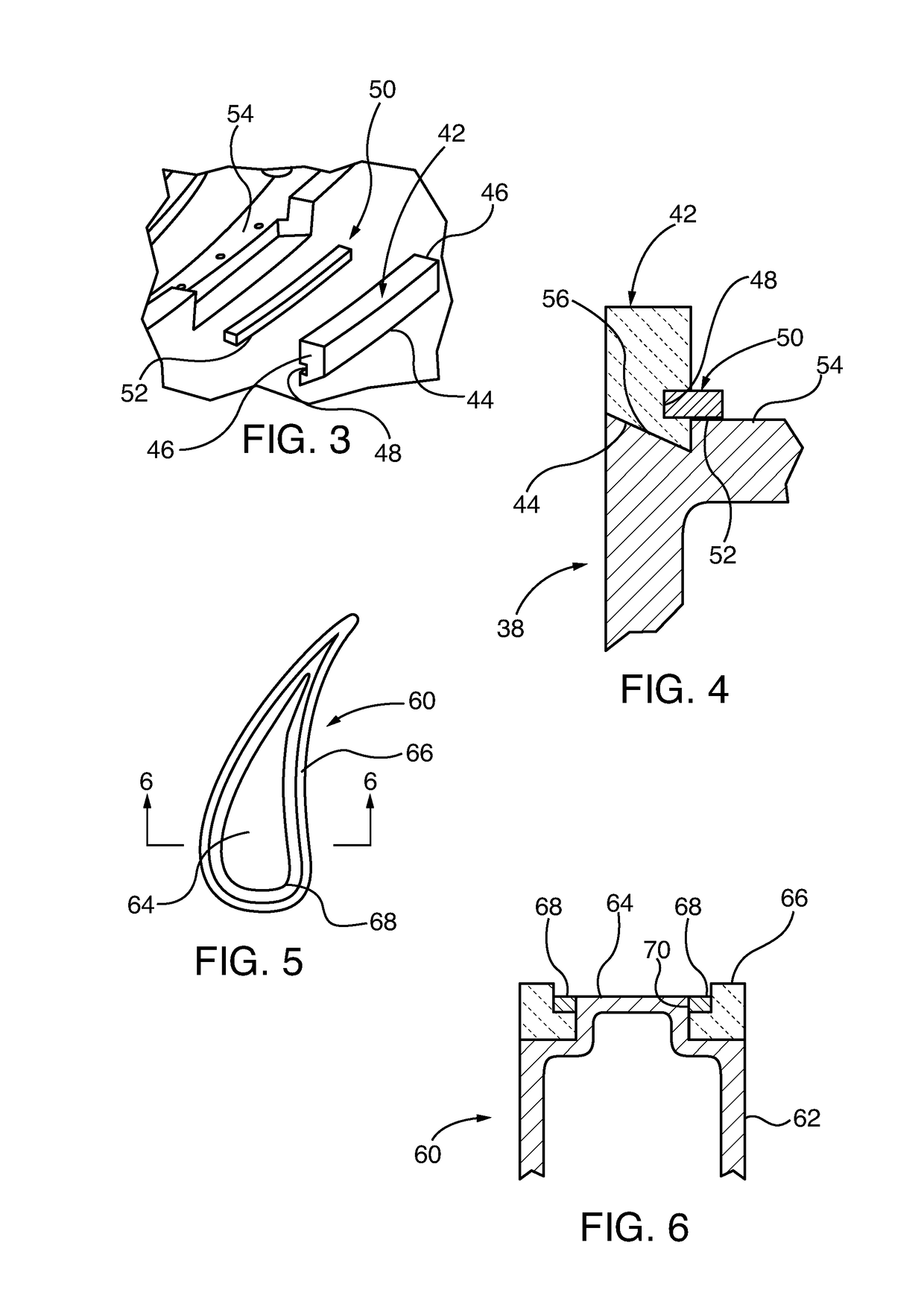Method for manufacturing and repairing a composite construction turbine blade
- Summary
- Abstract
- Description
- Claims
- Application Information
AI Technical Summary
Benefits of technology
Problems solved by technology
Method used
Image
Examples
Embodiment Construction
[0039]Exemplary embodiments of the invention fabricate composite turbine blades, which include a metallic blade body and one or more splice components, such as blade squealer tips or other types of blade tip, as well as leading edge inserts. In some embodiments, the metallic blade body comprises a superalloy. In some embodiments, the splice components comprise ceramic material. In other embodiments, the splice components comprise metal. The splice component mechanically interlocks with the metallic blade body by mating first and second joint portions respectively formed in the blade body and splice component. The respective mechanical joint portions are subsequently held in an interlocked position by a separately formed and applied, independent metallic retainer member. In some embodiments, the retainer member is formed by a sequential-layer material addition, additive manufacturing method. The methods are also useful for repair or retrofitting of non-composite, metallic blades end ...
PUM
 Login to View More
Login to View More Abstract
Description
Claims
Application Information
 Login to View More
Login to View More - R&D
- Intellectual Property
- Life Sciences
- Materials
- Tech Scout
- Unparalleled Data Quality
- Higher Quality Content
- 60% Fewer Hallucinations
Browse by: Latest US Patents, China's latest patents, Technical Efficacy Thesaurus, Application Domain, Technology Topic, Popular Technical Reports.
© 2025 PatSnap. All rights reserved.Legal|Privacy policy|Modern Slavery Act Transparency Statement|Sitemap|About US| Contact US: help@patsnap.com



